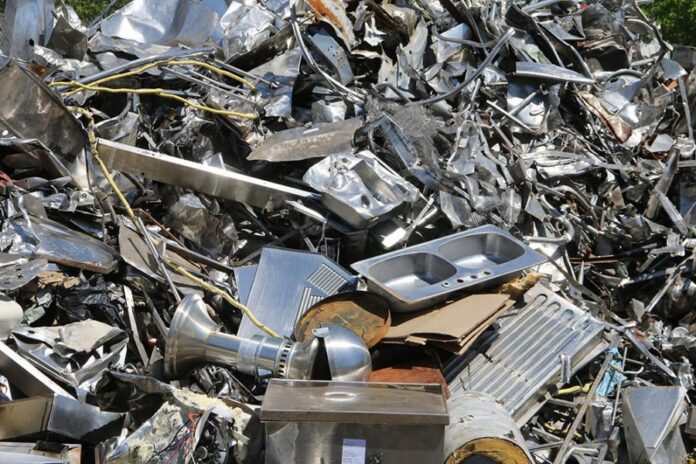BlueWeave Consulting, a leading strategic consulting and market research firm, in its recent study, estimated the United States stainless steel scrap market size at USD 895.3 million in 2022. Also, BlueWeave expects the United States stainless steel scrap market size to grow at a steady CAGR of 6.05% reaching a value of USD 1,342.4 million by 2029. The growing emphasis on sustainability and environmental responsibility has prompted industries to actively seek recycled materials, making stainless steel scrap a vital resource. This shift towards eco-friendly practices aligns with stringent regulations and carbon reduction goals, further bolstering the demand for scrap stainless steel as a green alternative. Also, the extensive applications of stainless steel in automotive, construction, metal products, and mechanical engineering sectors have necessitated a consistent and cost-effective source of stainless steel, encouraged recycling and supported market growth. Altogether, these dynamics underscore the central role of stainless steel scrap in the United States market’s sustainability and industrial growth.
Opportunity: Government’s increasing investments in infrastructure development projects
The United States stainless steel scrap market is poised for substantial growth, fueled by a significant increase in government investments in infrastructure development. In 2022, the federal government allocated a staggering USD 36.6 billion directly to infrastructure projects, further bolstered by an additional USD 94.5 billion disbursed to states for similar endeavors. The pivotal moment came with the passing of the Infrastructure Investment and Jobs Act in November 2021, a landmark legislation that earmarked a colossal USD 550 billion for rebuilding and revitalizing crucial elements of the nation’s infrastructure, including roads, bridges, rails, airports, and the expansion of high-speed internet access. This monumental spending initiative, which commenced in 2022 and is set to unfold over a five-year period, is significantly amplifying the demand for stainless steel scrap across a diverse spectrum of applications. From railway coaches to razor blades, bus stands to water tanks, and escalators to handrails, stainless steel scrap stands as the indispensable cornerstone for a multitude of industries within the process sector. This surge in demand is projected to be a driving force behind the sustained growth of the United States stainless steel scrap market, indicating a promising trajectory for the foreseeable future.
Sample Request @ https://www.blueweaveconsulting.com/report/united-states-stainless-steel-scrap-market/report-sample
300 Series Segment Holds Largest Market Share by Type, by Volume
Based on volume, the United States stainless steel scrap market is segmented by types into 200 series, 300 series, 400 series, and others. The 300 series segment shows significant revenue as it includes stainless steel scrap predominantly made up of 304 and 316 stainless steels, which are known for their excellent corrosion resistance, versatility, and widespread use in various industries, including automotive, construction, and manufacturing. The 300 series stainless steel scrap is in high demand due to its superior qualities, making it a preferred choice for many applications. Its popularity is driven by the need for durable, corrosion-resistant materials in industries where stainless steel is a crucial component, contributing to its dominance in the market.
Metal Products Segment Holds Largest Market Share by End-Use Industry, by Volume
Based on volume, the United States stainless steel scrap market by end-use industry is segmented into automotive, building and construction, metal products, mechanical engineering, and others. Among them, the building and construction segment will show significant growth due to the extensive use of stainless steel in architectural elements, structural components, and building fixtures. Additionally, sustainable construction practices and the emphasis on recyclability further boosted the demand for stainless steel scrap in this sector. The Leadership in Energy and Environmental Design (LEED) certification program and Green Building Codes programs in United States encourage sustainable building practices. Using recycled materials, including steel, can earn points toward LEED certification.
Impact of COVID-19 on the United States Stainless Steel Scrap Market
The COVID-19 pandemic sent shockwaves through the global supply chain, and the United States stainless steel scrap market was no exception. Lockdowns and restrictions imposed to curb the virus’s spread disrupted the intricate web of processes that constitute the supply chain for stainless steel scrap. The collection of stainless steel scrap, a critical initial step in the supply chain, faced challenges. Scrap collection often involves various small-scale operations and recyclers who source materials from various locations. The pandemic’s restrictions hampered their ability to operate at full capacity, leading to reduced scrap collection rates. Workers’ safety concerns also played a role, as many were hesitant to engage in physical labour near others. Processing facilities faced their own set of hurdles. Social distancing measures and workforce shortages led to reduced processing capacities. As a result, the efficiency of scrap processing lines was compromised, further delaying the availability of processed stainless steel scrap. According to the U.S. Census Small Business Pulse survey conducted between May 31 and June 6, 2021, 36% of small businesses experienced supplier delays within the country. These delays were particularly notable in the manufacturing, construction, and trade sectors. Transportation bottlenecks exacerbated the situation. Restrictions on movement, border closures, and disruptions in logistics led to delays in the transportation of scrap materials from collection points to processing facilities and to end users. All these factors combined to reduce the overall availability of stainless steel scrap in the market, affecting various industries dependent on this raw material. The pandemic underscored the importance of resilient and adaptable supply chains, prompting businesses to reevaluate their strategies and diversify sourcing options to mitigate future disruptions.
Competitive Landscape
The United States stainless steel scrap market is fragmented, with numerous players serving the market. The key players dominating the United States stainless steel scrap market include MB Metals, Inc., Kristi Corp, OmniSource, LLC, Bob’s Metals, Inc., Sriji Enterprises Inc., Greenland (America) Inc., and Schnitzer Steel Industries, Inc. The key marketing strategies adopted by the players are facility expansion, product diversification, alliances, collaborations, partnerships, and acquisition to expand their customer reach and gain a competitive edge in the overall market.
Contact Us:
BlueWeave Consulting & Research Pvt. Ltd
+1 866 658 6826 | +1 425 320 4776 | +44 1865 60 0662












